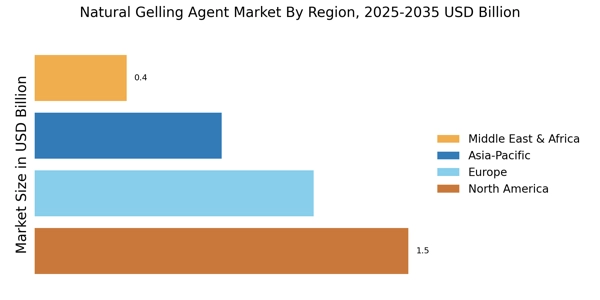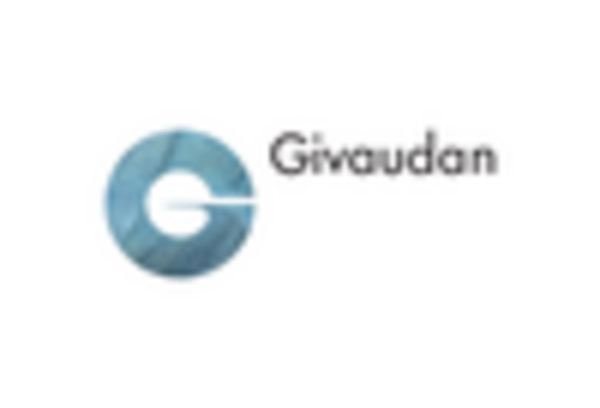Health and Wellness Trends
The Natural Gelling Agent Market is also being propelled by the increasing focus on health and wellness among consumers. There is a growing awareness regarding the benefits of natural ingredients, which has led to a shift away from synthetic additives. Natural gelling agents are perceived as healthier alternatives, contributing to the clean-label movement. This trend is particularly evident in the dairy and bakery segments, where consumers are seeking products with fewer artificial ingredients. Market Research Future suggests that the clean-label food market is expected to grow at a rate of 7% annually, indicating a strong preference for transparency in food labeling. Consequently, manufacturers in the Natural Gelling Agent Market are prioritizing the development of products that align with these health-conscious consumer preferences.
Innovation in Product Development
Innovation plays a crucial role in the Natural Gelling Agent Market, as manufacturers are continuously exploring new applications and formulations. Advances in technology and research are enabling the development of novel gelling agents that offer improved functionality and performance. For example, the introduction of hybrid gelling agents that combine the properties of different natural sources is gaining traction. This innovation not only enhances the texture and stability of food products but also meets the diverse needs of consumers. Market analysis indicates that investment in research and development within the food industry is expected to increase, further driving innovation in the Natural Gelling Agent Market. As companies strive to differentiate their products, the emphasis on innovative gelling solutions is likely to shape the future landscape of the market.
Expansion of the Food and Beverage Sector
The Natural Gelling Agent Market is significantly influenced by the expansion of the food and beverage sector. As the global population continues to grow, the demand for processed and convenience foods is on the rise. This trend is reflected in the increasing use of natural gelling agents in various applications, including jams, jellies, sauces, and desserts. Market data indicates that the food and beverage industry is expected to reach a valuation of over 8 trillion by 2025, which will likely drive the demand for natural gelling agents. Manufacturers are responding to this growth by innovating and diversifying their product offerings, thereby enhancing the overall market landscape. The integration of natural gelling agents into new food products is anticipated to further bolster the Natural Gelling Agent Market.
Regulatory Support for Natural Ingredients
The Natural Gelling Agent Market is benefiting from increasing regulatory support for natural ingredients. Governments and regulatory bodies are progressively recognizing the importance of food safety and consumer health, leading to the establishment of guidelines that favor the use of natural over synthetic additives. This regulatory environment encourages manufacturers to adopt natural gelling agents in their formulations. For instance, the approval of various natural gelling agents by food safety authorities has facilitated their incorporation into a wide range of food products. As regulations continue to evolve, the Natural Gelling Agent Market is likely to see enhanced growth opportunities, as companies align their product development strategies with these supportive frameworks.
Increasing Demand for Plant-Based Ingredients
The Natural Gelling Agent Market is experiencing a notable surge in demand for plant-based ingredients. This trend is largely driven by the growing consumer preference for vegan and vegetarian diets, which has led to an increased utilization of natural gelling agents derived from sources such as agar-agar, pectin, and carrageenan. According to recent data, the plant-based food sector is projected to grow at a compound annual growth rate of approximately 11% over the next five years. This shift towards plant-based alternatives not only caters to health-conscious consumers but also aligns with the broader movement towards sustainability. As a result, manufacturers in the Natural Gelling Agent Market are increasingly focusing on sourcing and developing plant-based gelling agents to meet this rising demand.


















Leave a Comment